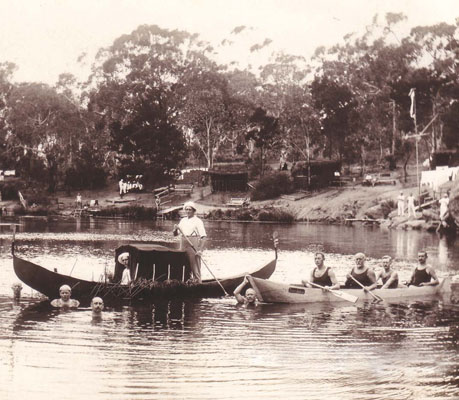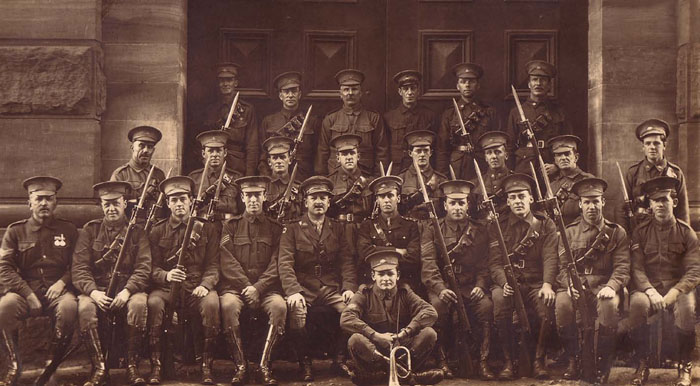
In March 1915 the first group of 89 internees arrived on foot at Berrima. The gaol was hastily cleaned up and made secure. The internees’ luggage had not arrived and there was no furniture. They were supplied with basic sleeping materials and they had to cook their own food. It was out of this sombre mood that the men named the gaol Ahnenschloss (Castle Foreboding).
Later the internees from the German Australian Line received beds from the company store. Internees who had money were able to order beds from furniture stores, while the majority had to build their furniture from timber found in the forest. The cells were very uncomfortable; freezing in winter, though cool in summer. Over time, the cells were made more comfortable.
The remodelling of the gaol in 1869 made it capable of housing 140 prisoners and their guards. By the end of 1915 there were nearly 200 internees. By 1918 the gaol was overcrowded with almost 300 internees. Internees were locked up at night but after morning roll call they were free to roam within a two mile radius during the day, returning for evening muster at 5pm.
Life at Berrima
Since the internees were allowed to free range, the village residents were made very aware of them from the first day. It was something of a culture shock when the newcomers appeared in the streets with foreign accents and culture. The arrival of the internees and the guards doubled Berrima’s population overnight. This might have caused resentment and hostility, but the Berrima villagers soon accepted the strangers as ordinary people making the best of the circumstances.
Because of their maritime background, most of the internees spoke adequate English and had little difficulty in communicating. They were polite and well-behaved, buying large quantities of bread, meat and provisions from the local stores. Some rented houses for their families who had come to live near them. But it was not just the economic benefits that made the internees popular. It was their goodwill, ability and industry that the majority of the villagers came to appreciate. The internees were often called by village women to remove snakes from their houses and they saved the Berrima School from a bushfire.
The internees created a pleasure garden and a flotilla of canoes on the Wingecarribee River. By 1915 the fame of the Germans’ bridge, huts and gardens had spread far beyond Berrima. People from other areas came to sightsee, swim and picnic. All were anxious to see the Germans, or ‘Huns’. It was ironic that the internees, in the middle of the war, brought about Berrima’s first tourism industry. Some people came to pick fights and cause trouble.
The solution was for the internees to erect a high barbed wire fence enclosing 17.5 acres on the left bank of the river known as ‘The Compound’. It retained a small section for the exclusive use of the internees. The stretch of water in front of the compound was for internees and civilians, except when large numbers of tourists were expected. The right bank was free for all to use. It was expected that villas and huts would only be built within the compound, but soon the huts extended far beyond its fences.
Berrima and Trial Bay were satellite camps of the very large Holsworthy Internment Camp at Liverpool. The German Concentration Camp Guard was made up of units of 25 men which were rotated frequently between camps. The system of rotations was aimed not only to minimise guards becoming too friendly with the internees, but also to reduce any opportunity for guards to exploit internees. Initially the Guard units were rotated fortnightly, then monthly from 1915 until 1917 when the 29th Guard was on duty for most of the year.
Generally the relationship between the guards and the internees was of mutual tolerance, respect and friendliness. Like the experience at Trial Bay, internees were allowed as much freedom and independence as possible.


